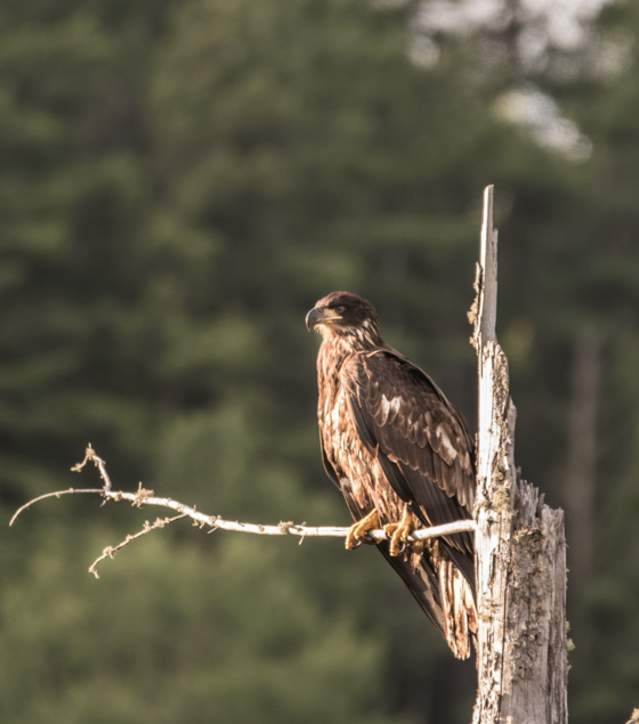Your browser is not supported for this experience.
We recommend using Chrome, Firefox, Edge, or Safari.
KEWEENAW BIRDING
Over 300 species of birds are documented by the Copper Country Audubon Society in the Keweenaw with at least 85 species alone in the Estivant Pines Nature Sanctuary. From vast, open beaches to dense, boreal forests, the Keweenaw offers a variety of bird habitats. Luckily, there are just as many ways to connect with nature and get an authentic birding experience in the Keweenaw.
Migrating birds by the thousands pass over the Keweenaw on their spring flight to northern nesting areas each spring. Over 15 different kinds of hawks, falcons, turkey vultures, owls and eagles have been identified by ornithologists who flock to the region to research and observe.
MIGRATION AND NESTING CYCLES
Some raptors like the Bald Eagle nest in the Keweenaw and other varieties like the rarer Golden Eagle pass over while going further north or west. 26 productive eagle nests were counted by the Gratiot Lake Conservancy in 2010. Sandhill cranes are another major nesting bird of the Keweenaw.
A newer bird making its way to the Keweenaw in the last two decades is the trumpeter swan which can be seen dipping in Portage Lake or neighboring bodies of water. Trumpeter swans are known for mating for life with the same partner, and males will do a dance and “trumpet” for their special lady. Keep an eye out for this display of behavior in the males.
SUMMER BIRDS
Robins, sandhill cranes, goldfinches, juncos, the common raven, the common loon and blue herons are just a minute fraction of the many species that “summer” on the Keweenaw. Many Nature Association and Audubon sanctuaries have marked trails to follow and are good places to start your search, but roadside, backyard and shoreline sightings are also common. Guided ‘birding walks’ are offered by local birders and sanctuary officials.
WINTER BIRDS
Although winters can sometimes be severe, some hearty species call the Keweenaw home on a year-round basis. These include black-capped chickadees, blue jays, pileated woodpeckers, common ravens and even eagles if there is open water available. This is why you’ll see congregations of birds on a semi-frozen Portage Canal in the early and late seasons. Birds such as the pine grosbeak, white-winged crossbill, common redpoll and rough-legged hawk come to the area only in the winter.
So, whether you’re a seasoned veteran or a beginner, grab those binoculars and come to the Keweenaw for a truly rare birding experience. We’ll tell you what birds you can expect to see in the Keweenaw, when they arrive, and where to go to get started.
SPRING RAPTOR MIGRATION
Migrating birds – some from as far away as South America – use the Keweenaw as a bridge in their flight to Canada over Lake Superior. Counters have recorded up to 15 different kinds of hawks, falcons, turkey vultures, owls and even eagles passing in numbers upwards of 20,000. Ornithologists from as far away as South Carolina and Florida make their way to Brockway Mountain for the annual “Hawk Watch”. Spring raptor migration is the busiest time of year for the Keweenaw’s aerial bird highways.
This yearly return of the birds is incredible to witness. The peaceful breeze off Lake Superior helps carry their wings across the wild Keweenaw. The guiding wind leads birds back here to the top of the Great Lakes each year. One documented female peregrine falcon is known for nesting in the Keweenaw for the last 10+ years, after being born on the Mississippi River in 2011.
Birds start arriving around the middle of April and the migration continues through the end of May. Depending on the weather, peak viewing time is usually around the middle of May.
BIRDS OF THE KEWEENAW
Keep an eye out for the following birds as you make your way through the Keweenaw. Photo credits of the birds pictured below go to the Copper Country Audubon Society.
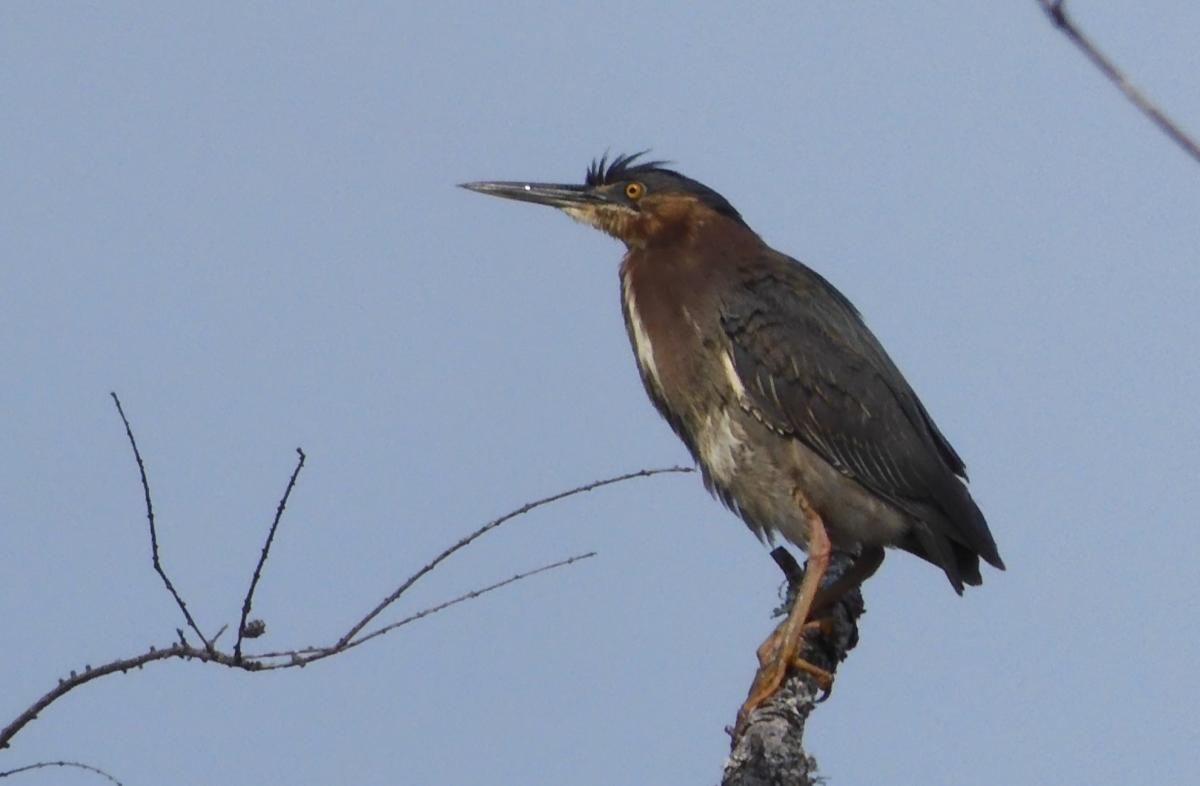
Green Heron: The green heron is “small and stocky”. Its wings are gray/black and feature a greenish-blue underside. At about 18 inches long, these birds prefer wetland habitats. Find them in thick-forested, wet areas of the Keweenaw. The birds have a tuft of feathers at the base of their long, thin beaks. Green herons migrate north earlier than other types of herons in spring.
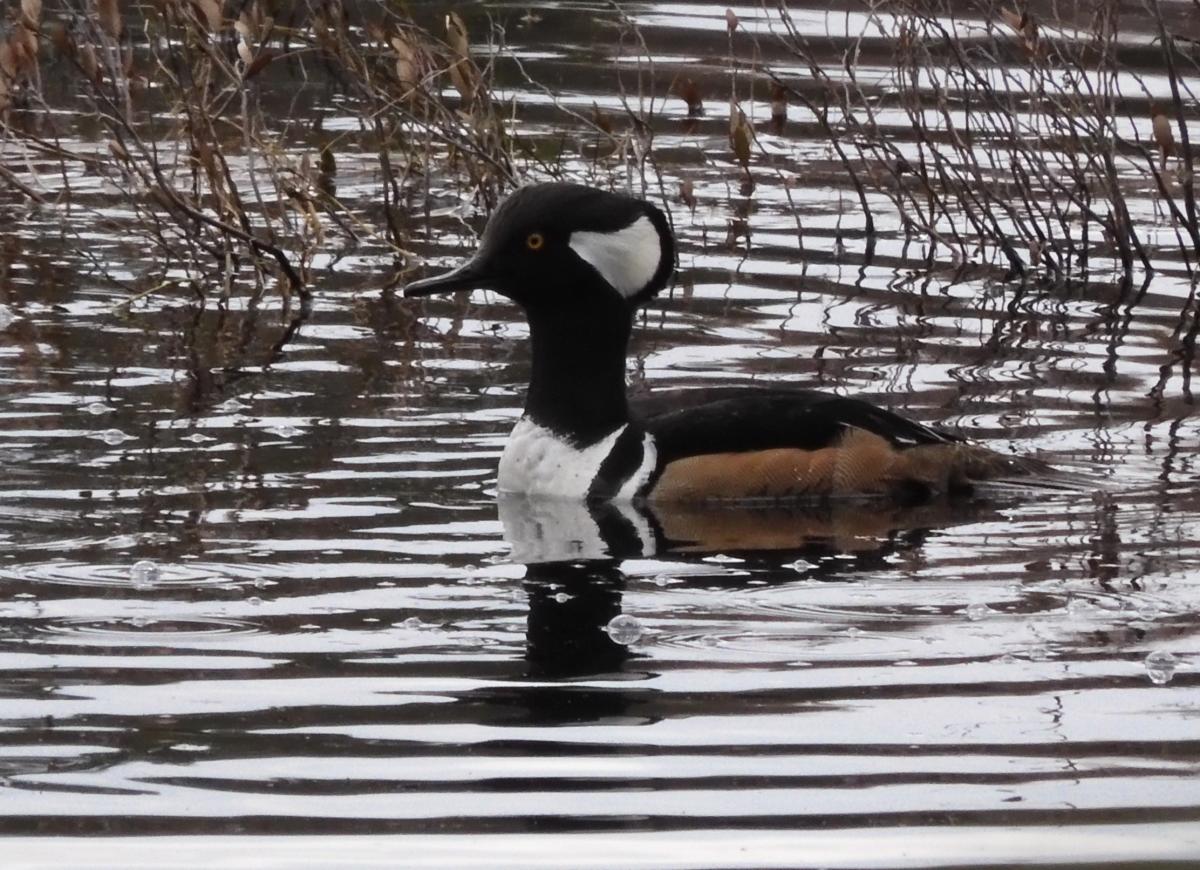
Hooded Merganser: A striking black, white and brown sight on the water – you’ll find hooded mergansers diving for food in the Keweenaw. A hooded merganser shares the shape and size of a bowling pin and males show a black stripe where its neck meets its body. Females are more brown. Hooded mergansers make their way north to the Great Lakes to breed and spend summers eating fish.
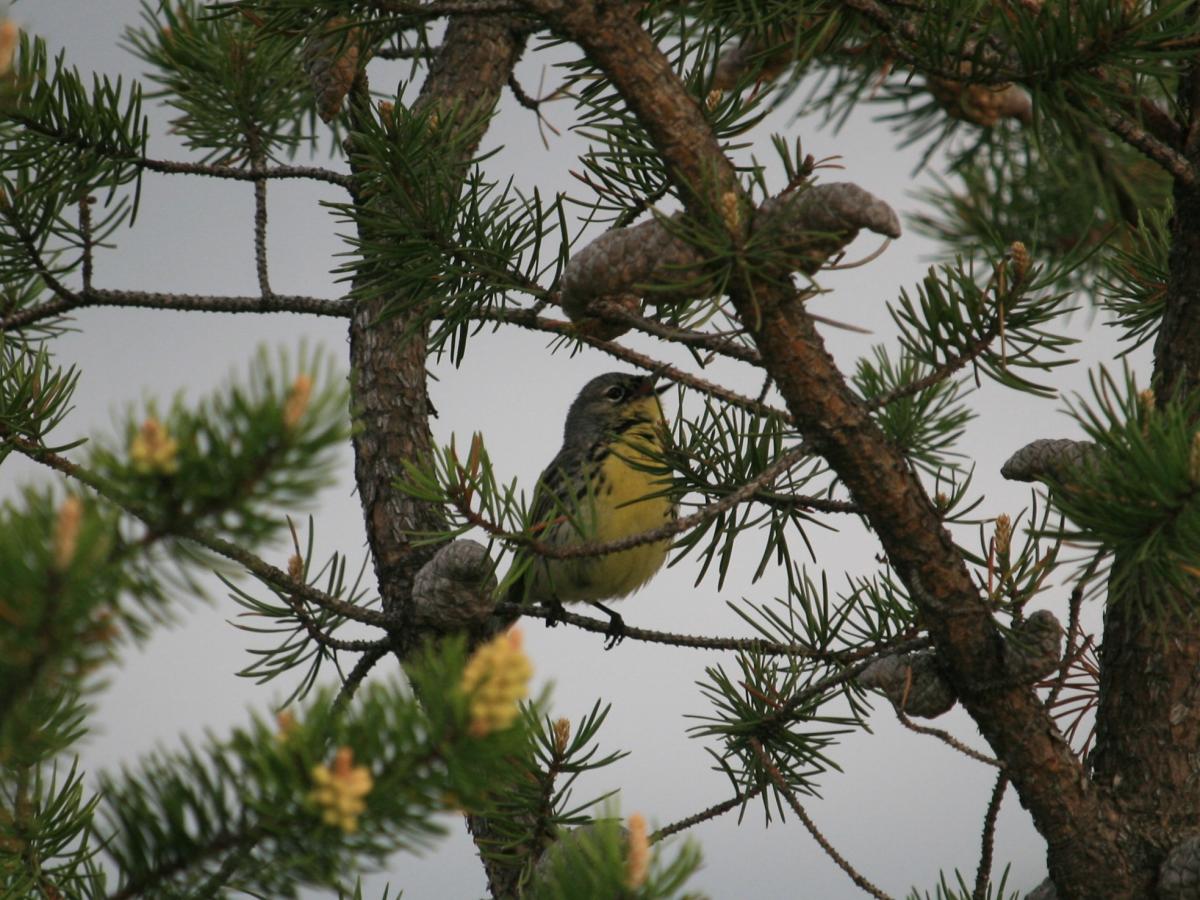
Kirtland Warbler: A growing bird species in the Keweenaw, the Kirtland Warbler has been known to settle in the Baraga Plains area south of Houghton. Coming up from downstate or Marquette, spend some time in parks around Baraga County or Canyon Falls for a chance to hear the song of the Kirtland Warbler. The Copper Country Audubon reports that increasing Warbler sightings is one of a few recent success stories in terms of Keweenaw bird populations. Kirtland warblers have a bright, yellow belly and a blueish-gray upper half.
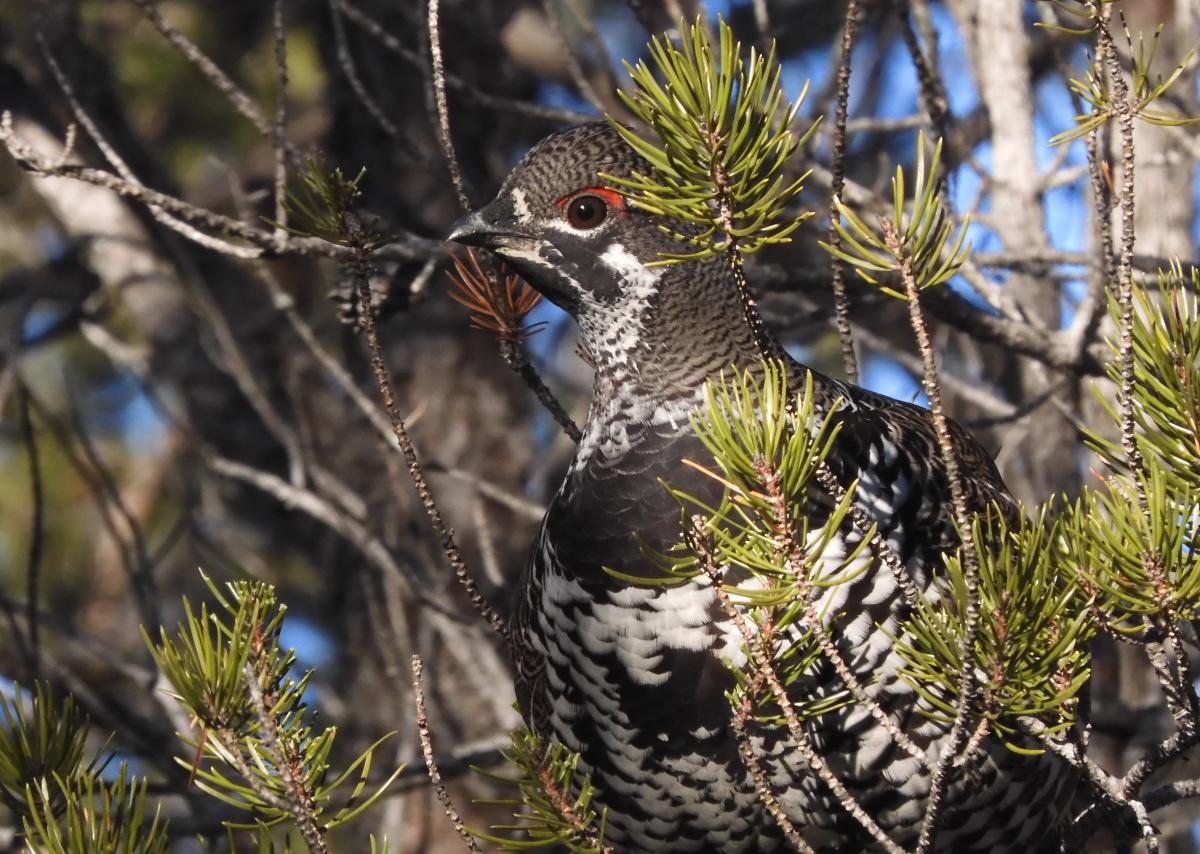
Spruce Grouse: The spruce grouse sports a checkered black and white chest with a veil of red around its eye. Experts say this type of grouse will often find you before you find it in nature. If you’re exploring an area like the Black Creek Nature Sanctuary, keep your ears in tune for a loud fluttering or whooshing sound as a spruce grouse takes off through the trees.

Sandhill Cranes: If it looks and sounds like a dinosaur, it’s a sandhill crane! These tall, slender birds can be seen along the sides of roadways, or open areas near water. The “leggy” bird is known for its loud call, and even disrupting one visitor’s round of golf at the Keweenaw Mountain Lodge in 2018. Sandhill cranes will migrate as far south as Florida and return to Michigan in late February.

Trumpeter Swan: An elegant large-sized bird in the Keweenaw, the trumpeter swan has been appearing in larger numbers in recent years. These white, beautiful birds can be seen resting on the water in pairs and raising their young here. See a recent study by Copper Country Audubon’s Joseph Youngman on recent increasing trumpeter swan activity in the Keweenaw. Trumpeter swans are the largest waterfowl in North America and are the largest type of swan in the world.
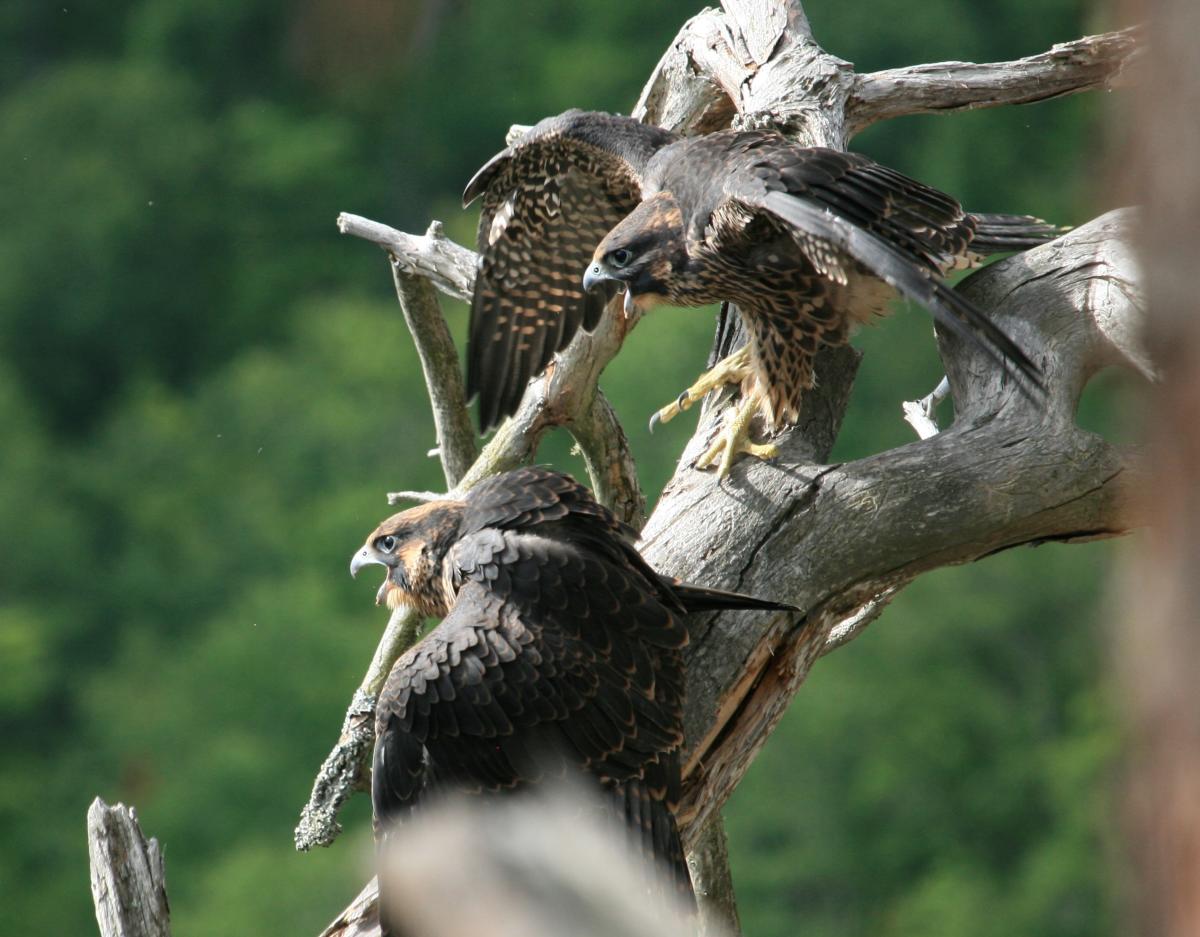
Peregrine Falcon: Peregrine falcons are an incredible predator that lives along the mountains, river valleys and coastlines of the Keweenaw. They feed on other birds in the area and are known for diving at speeds of over 200 miles per hour. Michigan Tech University has a nesting box live cam to view peregrine falcons above one of its buildings in the Keweenaw.
MORE PLACES TO SEE BIRDS
Nara Nature Park: One of Houghton’s hidden gems, the Nara Nature Park boasts 100 acres of prime bird habitat. A mix of wetland and forest brings a diverse range of wildlife close for observation along the boardwalk trail system and nature trails. Dogs are allowed on a leash. See birds take a dip in the Portage Canal and hear them sing songs from the trees around you.
Paavola Wetlands: The Keweenaw Land Trust established the Paavola Wetlands Nature Area in 1999. It has undergone numerous expansions and features a lengthy trail around a wetland area and Boston Creek. The thick forest of 200 preserved acres and wetland is a quiet reprieve for birds and other wildlife in the area. Look for berries here in the summer.
Sturgeon River Gorge Wilderness Area: Take a paddle along the Sturgeon River in Chassell for a close connection with wildlife. Or, try some challenging remote terrain for a more immersive experience. Head for Sturgeon River Falls near a parking lot off Forest Road 2270 south of Houghton. The Sturgeon River Gorge Wilderness Area is one of the most remote, undeveloped spots to go birding in the Keweenaw. Download or print maps ahead of time to avoid getting lost without a signal.
Baraga Plains: A prescribed burn that got out of control in 2007 took over 1,000 acres of forest in Baraga County. This area continues to regrow, but a special bird made the burn site its home. Black-backed woodpeckers are known for thriving in burnt pine forests. The black-backed woodpecker has populated this area of the Keweenaw so densely that a study on the large population appeared in the Wilson Journal of Ornithology. Check out a map of the area for hiking trails to see birds.
RESPECT WILDLIFE
Respecting the wildlife of the Keweenaw is not only ethically imperative but it is crucial for preserving the diverse ecosystems we see today. As enthusiasts and observers, it’s vital to embrace the principles of Leave No Trace to minimize our impact on these habitats. Avoid hunting, trapping, camping, fires and off-road vehicle usage in these protected areas.Stay on designated trails in nature areas. Avoid exploring off-trail and do not disturb any wildlife. DO NOT touch, move, or disturb ANY nests in the wild. Birds are wild animals and should only be observed from a distance.
This way, we ensure that nesting and feeding grounds remain undisturbed for birds and other wildlife. By following these guidelines we contribute to the long-term sustainability of the natural environments that make birdwatching in the Keweenaw such a unique experience. Now that you have the insiders’ scoop, charge up your camera, grab your binoculars and go birding in the Keweenaw!
Birding in the Keweenaw During Spring Migration
The signs of springtime in the Keweenaw are undeniable - despite the lingering snow piles that haven’t quite gotten the hint. The breezes feel ever so…
